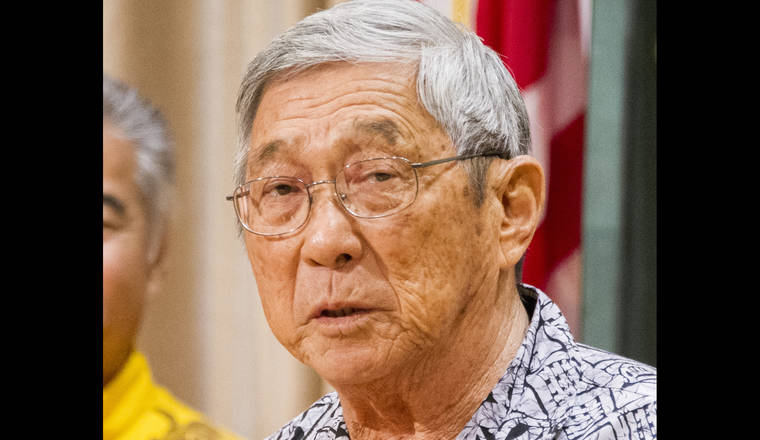How would you spend $80 million? Mayor Harry Kim had less than two days to submit a plan to the state Legislature, and now that SB 75 passed and is on its way to the governor, a plan is taking shape.
Kim laid out his plan in broad strokes that was less detailed than the other two neighbor island counties, but it satisfied top legislative leaders, who said they wanted to see federal CARES money sent to the island counties because they already had programs set up to get the money directly to those who need it.
The City and County of Honolulu got its money directly from the federal government, while the state received the rest of the $1.2 billion to divide between its own programs and the three counties of less than 500,000 population. The Legislature awarded the money on a proportional basis by population.
“The counties had set up programs already,” said Sen. Gilbert Keith-Agaran, a Maui Democrat who participated in a post-session press conference Thursday. “These were programs that were already set up. It did not require us to set up another program to get it to the people in need.”
Under guidance issued by the federal government the funding can be used to “meet payroll expenses for public safety, public health, health care, human services and similar employees whose services are substantially dedicated to mitigating or responding to the COVID-19 public health emergency” in addition to direct COVID-19 response programs. It must be spent by Dec. 31.
In response to council questions Thursday, Kim said the administration had to scramble to get the plan to the Legislature, but there will be ample time for council input once specifics are outlined.
“It was all broad categories,” Kim said. “We’ll come back to council to see how go to specific programs.”
Here’s how Kim divided the money:
• $28 million for childcare grants, household grants, technology improvements for rural areas to help support school closures and teleworking, student and senior technology tools and homeless prevention.
• $22.3 million for grants and support for small businesses, agriculture, energy, restarts, startups, nonprofits and the business community.
• $10.1 million for PPE, renovation needs for social distancing, computer and teleworking needs.
• $9.6 million for shelter needs for quarantine, homeless, contact tracing and services location, and other housing needs.
• $6.6 million for personnel costs relating to the COVID-19 pandemic response.
• $3.4 million for contact tracing program and implementation, compliance with reopening protocols, prevention and education, enforcement and community sanitation and disinfection.



